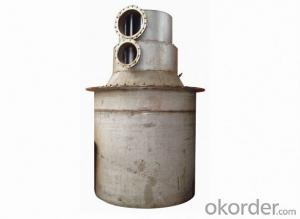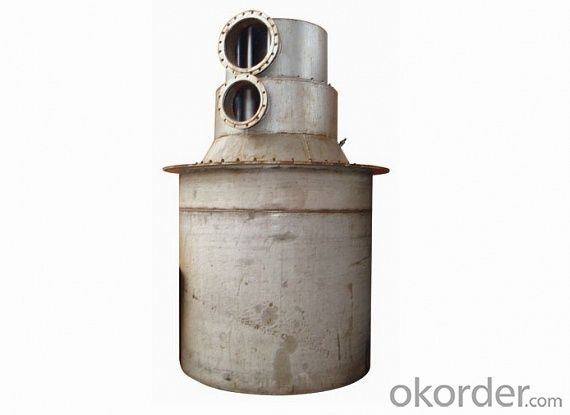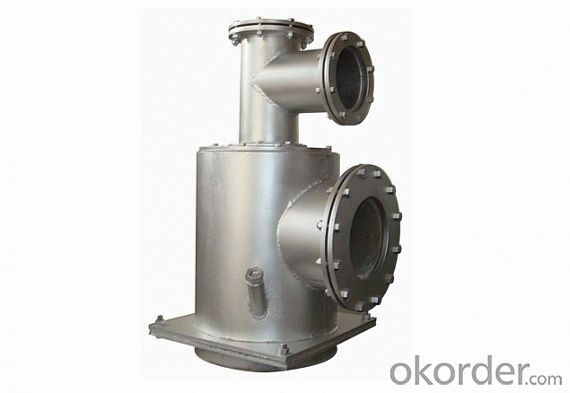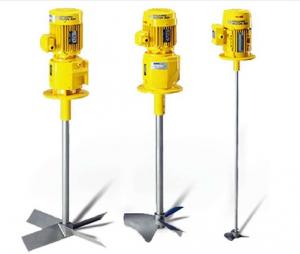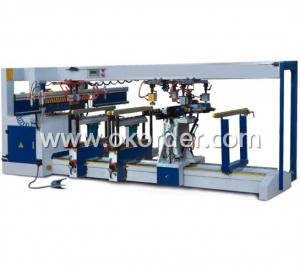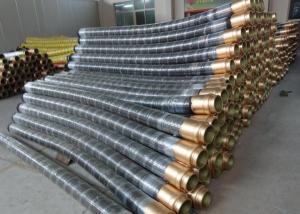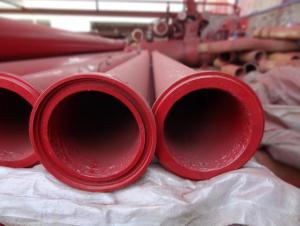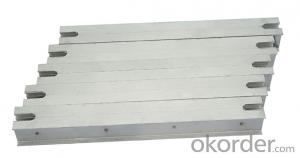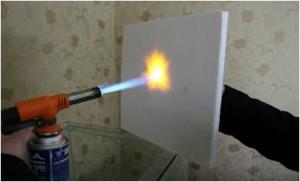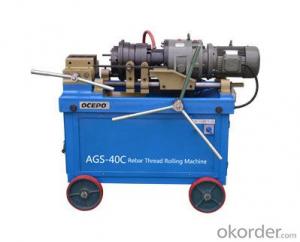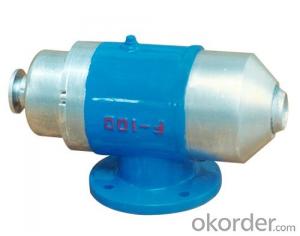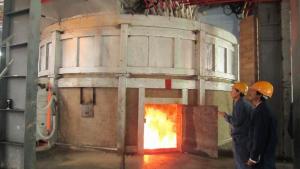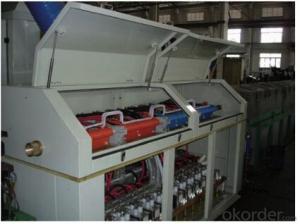Multi-unit Gas Burner (BFG series) Industrial Burning Furnace
- Loading Port:
- China main port
- Payment Terms:
- TT OR LC
- Min Order Qty:
- 5 set
- Supply Capability:
- 50 set/month
OKorder Service Pledge
OKorder Financial Service
You Might Also Like
Ⅰ.Overview
BFG series multi-unit gas burner adopt a multi-unit structure that divides large flow air, gas into several hybrid emitted small-units. To strengthen the mix of air and gas, air and gas nozzle are equipped with helical blade to reduce the mixed-distance of air and gas. Gas will be burning rapidly after entering the combustion chamber. Thus stable flame can be obtained when using the blast furnace gas of low calorific value directly.
This burner is mainly made up of burning torch, the center burner, the main fire nozzle and combustion chamber, etc .Through equipping different flame monitoring system, the burner’s entire combustion process can be monitored effectively to meet the needs of various heating technologies. It applies to hot-blast stove, rotary kiln, thawing furnace, conducting oil furnace, boiler and other process technologies that require large flow combustion and the entire process monitoring.
Ⅱ. The meaning of burner’s code
For example: BFG-4000J1.5·Ⅰb expresses BFG multi-unit burner, burning capacity is 4 million kcal/h and the length of combustion chamber is 1.5m, the main burner uses the blast furnace or producer gas with 850-1350Kcal/Nm3 calorific value, the center burner uses the mixed or coke oven gas with 1600-4800Kcal/Nm3 calorific value.
Ⅲ. Characteristics and working principle
Characteristics:
*High-capacity burner, adapt to various gases’ direct combustion including blast furnace gas.
*The unique shunt design, divide large flow gas into several small-units, be ring distributed around the center burner, make air and gas mixture evenly and burn completely, can observe the combustion state of each flow unit online.
*The combustion burner has a center burner with stable combustion, can maintain a stable fire when using low-calorific gas and the main fire is very small, the largest capacity adjustment range can reach 1:10.
*The center burner is installed in the axis position of main burner to minimize the mutual interference of the center burner air flow and the main burner air flow that make ignition more stable.
*The center burner is ignited with burning torch and uses internal combustion design to ensure the burning conditions of low-calorific gas also can use the blast furnace gas of low calorific value directly to achieve stable combustion.
* Compact and easy to operate, the burner has reserved the functions of automatic ignition, plasma or UV flame monitoring. At the same time the main burner flame can be equipped with high-temperature long-range surveillance cameras to achieve remote controlled combustion.
* Serialized products that helical blade in the air and gas nozzle can vary with calorific value of gas to reduce the mixed-distance of air and gas. Then gas will be burning rapidly after entering the combustion chamber. Thus stable and shorter flame can be obtained.
* Can easily adapt to gases of different calorific value, simple replacement of fuel, have a strong adaptability to gas and air pressure changes, safe and reliable work.
Working principle:
BFG series multi-unit gas burner is mainly made up of burning torch, the center burner, the main fire nozzle, combustion chamber, ignition and flame monitoring system, etc (see Figure 1).
Firstly, gas of higher calorific value (generally≥1600kcal/Nm3) and smaller flows (≤10000kcal/h) and room temperature air enter the burning torch under certain pressure, then premixed through the burning torch’s mixer. After that, they are ignited in the nozzle position of burning torch by the high-voltage electrodes at the centre of burning torch. After flame detector shared with the centre burner confirmed on fire, open the center burner air and gas, now the center burner’s fuel flow can be ignited with burning torch. At the same time, the center burner’s flame is detected by flame detector. After a period of time, the center burner can maintain a stable combustion state after close the burning torch gas. Then, open the main fire air and gas according to need, the main fire flame will be detected by the flame detector located near the main fire.
There are two main fire flame detectors, one near one far, to monitor the entire combustion state within the large regulating range that ensure the security effectively when low-calorific value gas burning.
In accordance with the needs of burner application, temperature detection hole can be reserved in the wall of hole of the chamber. Through the burner air-fuel ratio control itself, the flame temperature out the combustion chamber can be controlled in a certain range to meet the requirements of production technology.
In addition to the BFG series gas burner referred in the manual, our company can also design and manufacture the BFG series gas burner of special specifications according to user’s needs. Welcome Design Institutes and enterprises to come for consultation and negotiation. We will use advanced technology, high-quality products, preferential prices and good customer service to meet user requirements.
- Q: Detailed description of the feed pump
- To this end, 0.9Mpa 300 ℃ heating extraction steam into the back pressure small steam turbine, so that drag the feed pump, exhaust gas 0.1Mpa into the deaerator to feed water.
- Q: Principle and Characteristic of Frequency Conversion Regulation
- Through a new generation of full control electronic components, with the inverter to change the speed of AC motor to fan the flow control, can significantly reduce the previous mechanical way to control the flow caused by energy loss.
- Q: What is the difference between a centrifugal fan and a blower?
- Centrifugal fans and blowers are among the two different categories, can not be compared.
- Q: Performance Characteristics of Wear Resistant Ceramic for Induced Draft Fan
- As the fan blade working surface composite ceramic layer hardness HRA ≥ 86 (toughened alumina composite material), local wear serious parts of the use of secondary sintered silicon nitride toughened ceramic or zirconia toughened alumina ceramic, up to HRA94 above,
- Q: What is the role of water pump?
- China's rural areas are vast, the annual rural areas need a lot of pumps.
- Q: What are the general classification of the fan?
- According to the outlet pressure (boost) is divided into: fan (≤ 15,000 Pa), blower (1.5 ~ 350,000 Pa), compressor (≥35 million Pa).
- Q: The relationship between fan power and air flow
- The amount of air flowing per unit of time is used to indicate the capacity of the blower or ventilation equipment, calculated in cubic meters per second.
- Q: What is the structure of the blower?
- Left and right wall panels and installed in the left and right wall panels within the bearing, seal, etc. can be common to each other.
- Q: Boiler feed pump and the difference between ordinary pumps
- Rupture, the flow surface material to form a great, repeated impact, resulting in fatigue erosion or erosion, that is, pump cavitation.
- Q: What is the difference between the ventilator and the draft fan (G and Y)?
- Its resistance to grain erosion and wear performance at least ordinary tungsten carbide surfacing, spray spray welding and alloy powder welding and other conventional treatment methods to improve more than 5 times higher than the matrix 16Mn steel more than 100 times; thickness of 1.5mm ceramic actually use
Send your message to us
Multi-unit Gas Burner (BFG series) Industrial Burning Furnace
- Loading Port:
- China main port
- Payment Terms:
- TT OR LC
- Min Order Qty:
- 5 set
- Supply Capability:
- 50 set/month
OKorder Service Pledge
OKorder Financial Service
Similar products
Hot Searches
Related keywords
